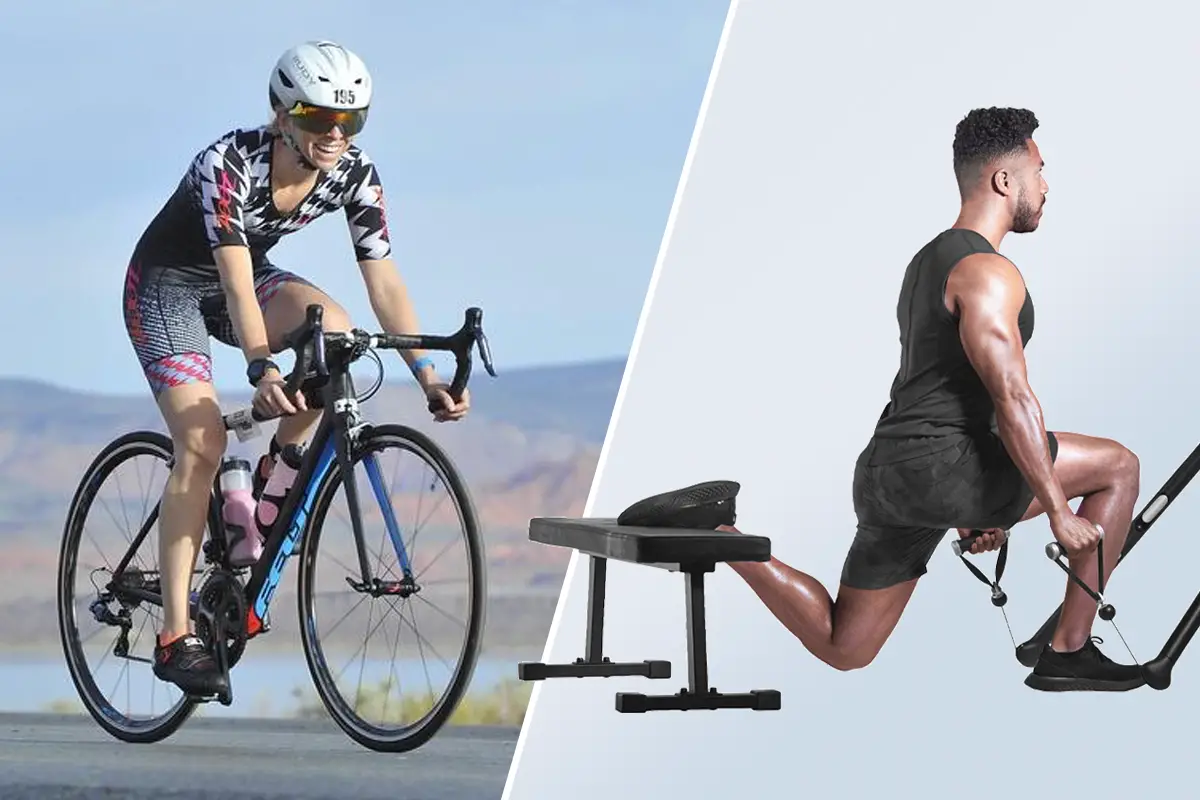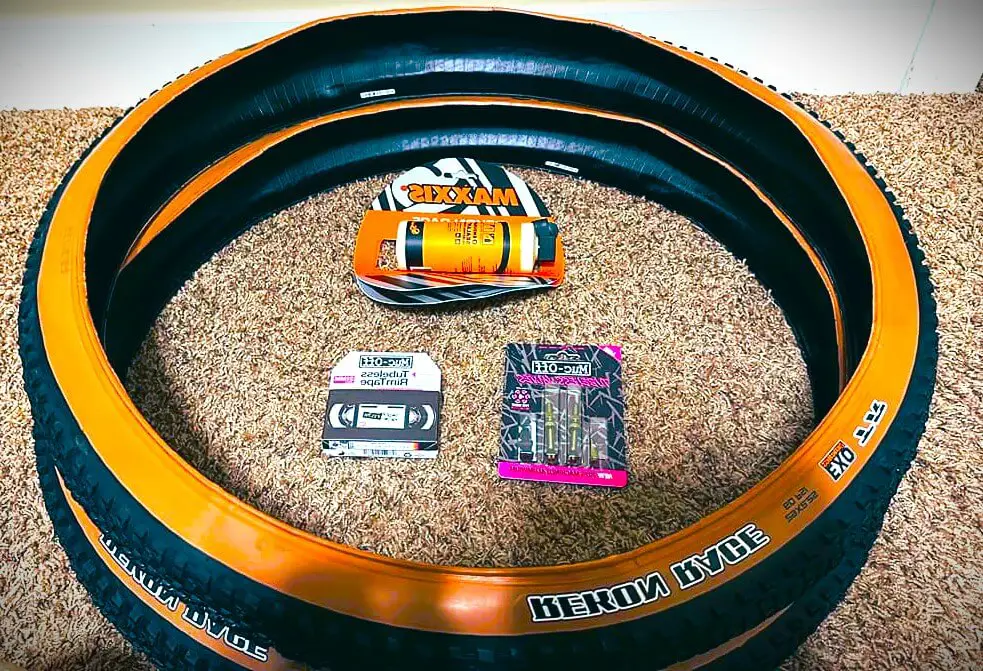Mountain Bike vs Road Bike: 6 Speed Factors Need To Be Informed

As an affiliate, we may earn from qualifying purchases. We get commissions for purchases made through links on this website. You can read more on our Affiliate Disclaimer here.
Many people want to know about Mountain Bike vs Road Bike factors. Especially the speeding factors of a Mountain Bikie vs Road Bike.
Mountain Bikes and Road Bikes are two types of bikes used for two different situations. As their names suggest, Mountain Bikes are for riding downhill and on unpaved, trail roads, whereas Road Bikes are for riding on smooth, paved roads.
But how do the two bike types compare when it comes to speed? Do you know there are some bikes that fit for roads, trails, and mountains also?
In a nutshell, the Road Bike is much faster than the Mountain Bike. But there are a lot of reasons behind this, so let’s crack the nutshell and have an in-depth Mountain Bike vs. Road Bike speed comparison.
Analysis of the Facts That Have Direct Impact on Speed of A Bike:
- Weight
The Mountain Bike is generally heavier than the Road Bike. This makes sense because the Mountain Bike has to be sturdier and have thicker wheels, tires, frames, and other components, to withstand unpaved and hilly routes.
On average, a full suspension Mountain Bike weighs around 30 lbs, whereas a Road Bike weighs almost half as much — 17 lbs. Also on average, a 12 lbs difference in weight causes a decrease in 1 mph speed.
In other words, because of the higher weight alone, Mountain Bikes are inherently slower than Road Bikes.
- Tires
As mentioned above, Mountain Bikes have thicker tires. This is of course to absorb the shock of the trails which are not only unpaved but also are filled with rocks and stones and other obstacles.
A typical Road Bike would be stopped at its tracks when pitted against such rough terrain, especially if it hits an obstacle. This is because its tires are designed to be smoother and thinner than those of a Mountain Bike. A Road Bike’s tires are thinner and so offer more speed.
The science behind wider tires offering less speed has more to do than just the tire weight. The significant variable here is the width, not so much the weight. The wider the tire, the more the surface area of the tires that comes into contact with the ground, thus increasing resistance.
Tires with more pressure are tauter and so less of their surface area comes into contact with the terrain, making for higher speeds.
Another thing to consider is the tread pattern. We already mentioned that Road Bike tires are smoother whereas Mountain Bike tires are rougher. Using more tread or rubber on the tires is to build friction.
As we know, more friction decreases speed, but more friction is also needed for a Mountain Bike in order to be stable on rough terrain. Therefore, the Mountain Bike sacrifices speed for safety and stability, something which the Road Bike does not need to do.
- Suspension
Another function that adds stability to the Mountain Bike is its suspension mechanism. As you may know, bikes can have suspension on the front (such bikes are called hardtail bikes), or they can have full suspension — both on the front and the rear. This helps stabilize the rider on rough terrain and facilitates a smoother riding experience.
And though suspension — whether full or hardtail — increases the price tag of a Mountain Bike, it also hacks away at its speed. This is because some of the efforts that go into pedaling the bile are absorbed by the suspension, even for a bike with just front suspension technology.
In other words, a Mountain Bike with suspension technology is inherently slower than a Road Bike. One solution is to lock the suspension so that 100% of the pedaling effort goes into moving the Mountain Bike forward. However, beware of rough terrain as you won’t get much protection then!
- Aerodynamics
Aerodynamics refers to the way things move through air and encounter air resistance. To combat air resistance and improve aerodynamics, modern technology has developed streamlined cars and airplanes, and rockets. The way these vehicles are designed is intricately connected to the speed they can attain.

We all know those race cars are designed to be so streamlined and short in height. But does it also apply to bikes that are significantly slower? Well, yes, even still.
At low speeds, you won’t notice the difference. But if you go over, say, 8 mph or 13 km/h, then you will be surprised at how much aerodynamics comes into play. If you have watched bike racing, you have seen racers riding in an extremely hunched posture to get all the boost they can.
Coming to the speed comparison, Mountain Bikes are designed for the rider to sit in a relatively upright position, whereas Road Bikes are designed for the rider to sit in a more ‘slouched and angular downward’ position. This automatically increases the aerodynamics of a Road Bike over the Mountain Bike.
You may ask why. Why does the Mountain Bike make less use of aerodynamics? The reason, again, is for safety. The frame geometry of a Mountain Bike is quite different from that of a Road Bike. This automatically changes the posture of the rider. When the rider is upright, he is safer. But the fact remains that this makes the Mountain Bike slower than the Road Bike.
- Gears
Since Mountain Bikes do not typically require reaching high speeds on unpaved roads, and especially during climbing or going downhill (at which point high speeds would be dangerous), the gears aren’t as large. In contrast, Road Bikes have larger gears with a broad range of combinations.
In particular, Road Bikes have higher low gear and higher high gear than Mountain Bikes. The higher low gear corresponds to power, meaning that Mountain Bikes are more powerful in order to tackle rough terrain. However, the high gear corresponds to speed, meaning that Road Bikes have a higher top speed than Mountain Bikes.
Final Thoughts on Mountain Bike vs Road Bike:
The speed comparison between the Mountain Bike and the Road Bike really comes down to one thing: the purpose behind the bike type. Whether it be the weight, the tires, the suspension technology, the aerodynamics, the gears — the Road Bike edges ahead of the Mountain Bike in terms of speed.
Then, is the Road Bike better than the Mountain Bike? In terms of speed — both maximum speed and acceleration — yes, the Road Bike is better. But that is sole because of the purpose of the Road Bike which prioritizes efficiency and comfort, whereas the Mountain Bike prioritizes safety.
This also does not mean that the Mountain Bike has no efficiency at all, nor that the Road Bike is quite unsafe. The point is that the setting of the “Road” is conducive to the higher speed and less need for safety of the Road Bike, and the setting of the “Mountain” or “Hill” is conducive to the slower speed but higher safety measures of the Mountain Bike.
In other words, the Mountain Bike is not slow, and nor is the Road Bike unsafe. It is simply that one is faster than the other, and the other safer, due to the requirement of the setting.
FAQs
Is a carbon Mountain Bike lighter and so faster?
Yes, bikes made with carbon frames are much more lightweight than those made with aluminum. However, also bear in mind that carbon Mountain Bikes cost more. Also, when pitted against a Road Bike (which can also have carbon frames, remember), the Road Bike is still faster.
Is it possible to lock the suspension of a Mountain Bike to make it go faster?
Yes, that indeed is a good idea to speed up a Mountain Bike. However, if you use your Mountain Bike on unpaved roads and in hilly areas, then do not take this risk. Stick with the suspension technology as it is meant for your safety. However, if you plan to use your Mountain Bike for commuting or doing anything else on paved roads, then by all means do so.
Is it possible to replace the tires of a Mountain Bike and get thinner tires?
Another clever idea. Yes, you can do so, provided that you know the risks of the lack of stability that thinner tires will cause. Just like the above FAQ answer, if you plan to ride your Mountain Bike on paved surfaces, feel free to replace those wide tires with thinner ones. They will fit!
Do Mountain Bikes have bigger wheels?
Yes, not only do Mountain Bikes have thicker tires, but they also have bigger wheels. The bigger wheels add more weight to the bike, slowing it down. This is another reason why Mountain Bikes come up short in a speed comparison with Road Bikes. However, the bigger wheels do make the bikes sturdier.
Do Mountain Bikes have different handlebars from Road Bikes?
Quite right. The handlebars of Mountain Bikes tend to be much wider and flat, whereas Road Bikes have drop bars.
The difference in shape and design makes sense when you look at the requirements of each bike. Mountain Bikes require sophisticated handling when going downhill or moving on unpaved terrain. Therefore, it is easier to maneuver the Mountain Bike with wide and flat handlebars. On the other hand, Road Bikes may often have to squeeze in between other vehicles or enter through small openings, and so the handlebars are designed to be shorter. Neat, right?

Steven is a professional cyclist and his passion is cycling. He has been cycling for the last 6 years and he loves using bikes while outing as well. Based on his experiences with the different types of bikes; he is sharing his opinions about various bikes so that a beginner can start right away. Find him on Twitter @thecyclistguy Happy Biking.





3 responses to “Mountain Bike vs Road Bike: 6 Speed Factors Need To Be Informed”
[…] is a blessing, the headwind is a nuisance, and the crosswind is a menace. This also works as a speed factor for most bikes and […]
[…] you want clipless shoes, though, which have cleats, then you need cycling shoes. Road and mountain biking is much better with clipless cycling shoes. If you do opt for cycling shoes, then can you still use […]
[…] These bikes have thinner tires and are meant for speedy rides. Also, the sleek profile and better aerodynamics made the road bikes an immediate choice for city […]